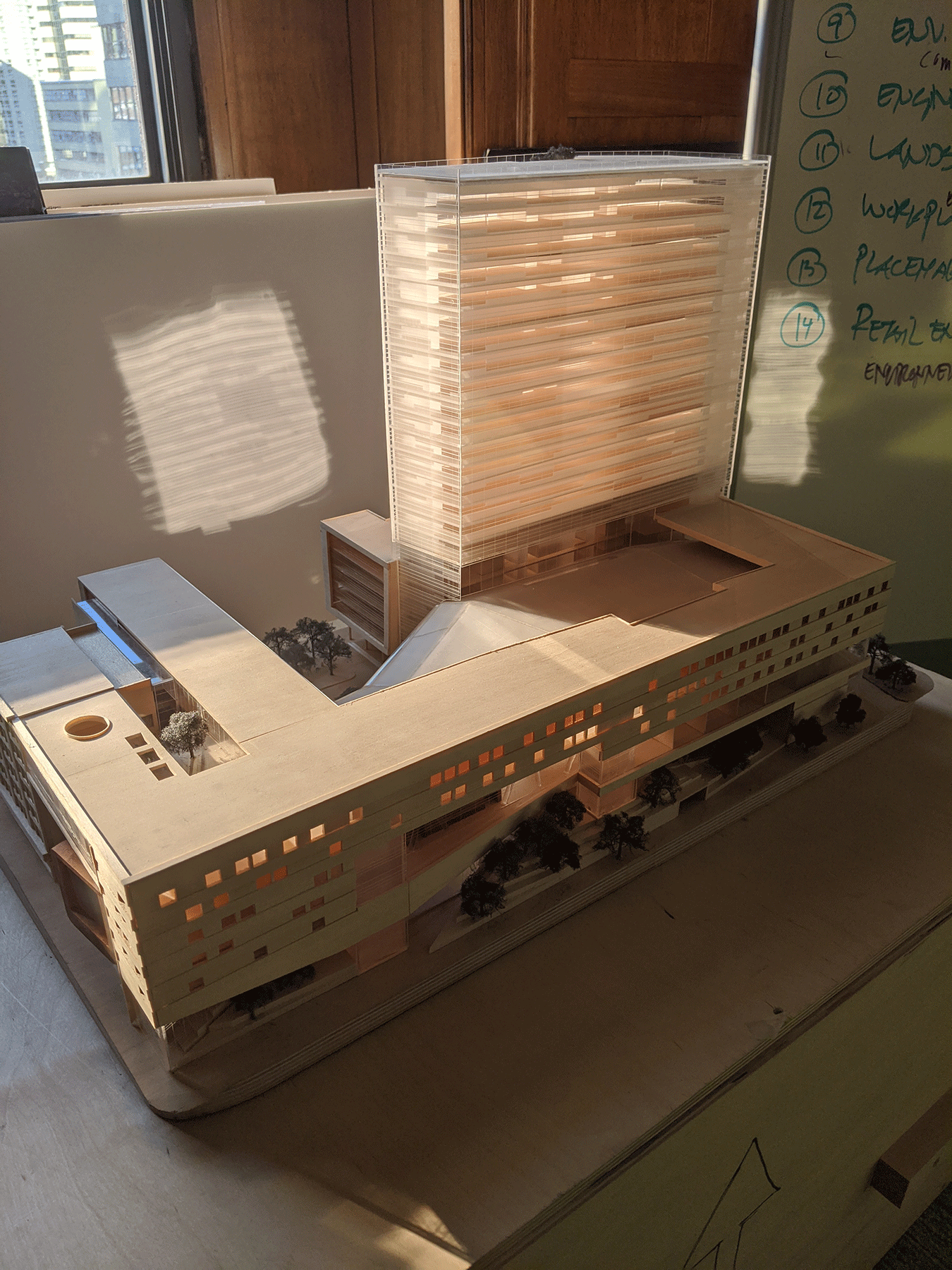COMPETITION SCHEMES AS HARBINGERS OF THE ADVENT OF MIXED-USE IN MONTREAL
MYSTERY BOX
In January 2020, a strange message landed in my inbox from the SQI, the province's real estate development and construction agency :
"Please collect a box belonging to you" - undisclosed SQI spokesperson.
In the next week, said-mystery box landed on my doorstep. Once opened, a flood of memories erupted from its content: the original model from our 2003 finalist scheme in the open international competition for the Montreal Cultural and Administrative Complex (MSO). See below:
The ambitious project was for a 230M$ integrated complex reuniting the Drama, Art and Dance Conservatories, with the Montreal Symphony Orchestra Hall as centerpiece with the provincial government Montreal offices. The project was never built since it was unceremoniously abandoned during a change in government. It then dawned on me that we had been working on a first generation mixed-use complex, much like we often see today in Montreal's landscape.
MIXED-USE RAMP-UP
This project was quickly followed by the design of a succession of mixed-use projects locally and abroad:
Peel basin Casino & Entertainment Destination for Cirque du Soleil and Loto-Québec
BC3 in Beijing, China
Hotel & Lifestyle Complex, Abu Dhabi
Balmoral Entertainment Destination
Shenzhen Nanshan Cultural & Sports Complex
These ventures were prototyping a nascent approach to the mixed-use typology and seeking for the Holy Grail of "synergy", shared infrastructure costs, economies of scale and "foot-traffic". For our team, these projects were the vertical counterpoint to the integrated masterplanning and new city design that was happening at the same time around Quartier des spectacles, Suqian New City, Tianjin Central Square and other urban ensembles.
These explorations, mainly around competition schemes, would stress-test the typology and inform the next wave of more pragmatic projects that would eventually pop-up in and around Montreal.
MIXED-USE MONTREAL
The decade between 2010 and 2020 is when the mixed-use trend would finally hit Montreal. Projects like Humaniti (code-name Viger/Bleury) were born and met with a mix of disbelief, awe and resistance all rolled into one.
The economies of scale effect, synergies and foot traffic would still remain elusive for the most part, owners reverting to reflexes of separating circulation for fear of "contaminating" clienteles and separating building systems to simplify costs allocation between tenants/owners.
This second generation would include, for my contribution during my tenure at Montreal-based Lemay, such flagship projects such as Quartier de la Montagne (now Four Seasons Montreal), Humaniti and Royalmount.
FROM MIXED-USE TO HYBRID
Some projects would eventually break form the mold and push the mixed-use envelope, trying to meld together user flows and share building infrastructure and even sharing spaces within the ensemble. I would call this 3rd generation of mixed-use "HYBRID ENSEMBLES". Mostly un-built as of yet, these include Legado, Campus Art & Innovation at Maison Alcan (Zu) and CLOUD-SCRAPER CHENGDU, a finalist scheme in an international architectural competition. This last entry would push the typology to the limit, generating a striking urban figure with a flowing concourse cavern at the heart called The Dragon's Den:
WHAT'S NEXT?
As long as paradigms regarding shared costs and spaces remain, the typology is doomed to a holding pattern, trying to justify and absorb the cost of multiple circulation cores as well as the redundancy of building systems. The mirage of the shared energy loop between adjacent programs will remain unattainable and we will be unable to reduce overall energy costs for these projects. As long as the only reasons for combining uses together in a single building are to compensate for high land costs, to maximize density and to respond to short-term market absorption of each component, then no further innovation will occur in this regard. And current social distancing requirements won't help any in this regard, further re-enforcing the reflex of separating user flows instead of merging them.
This being said, I am still a firm believer in the strength of the "shared economy" model and the rewards of sharing the burden/benefits of common infrastructure will eventually prevail over wasteful redundancy. Let's hope the current upheaval in real estate since the COVID-19 outbreak will accelerate such an innovation for the next generation of mixed-use/hydrid ensembles in Montreal and abroad.














Comments